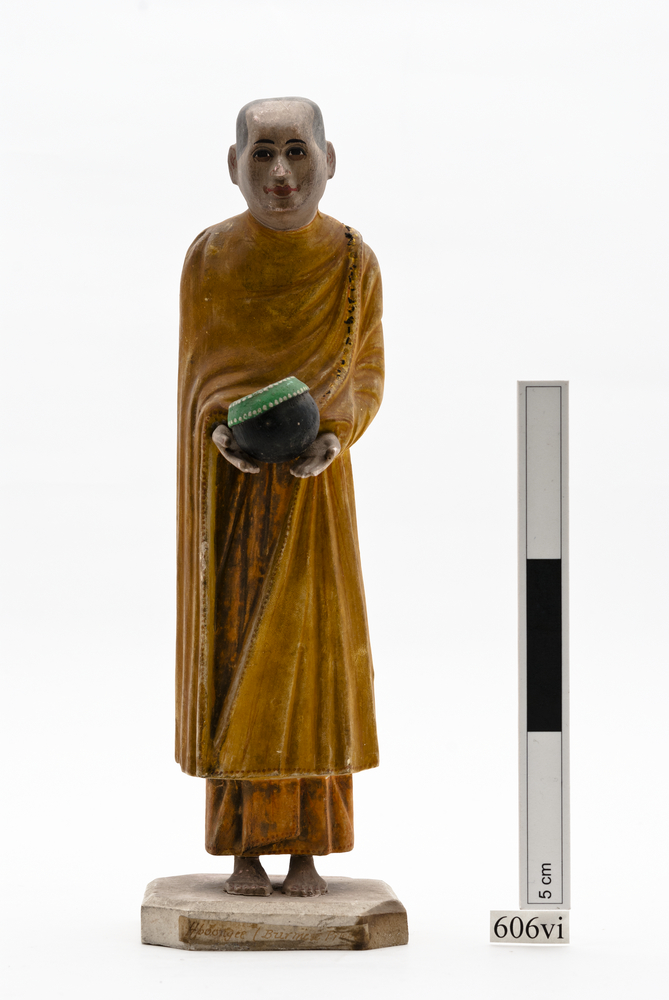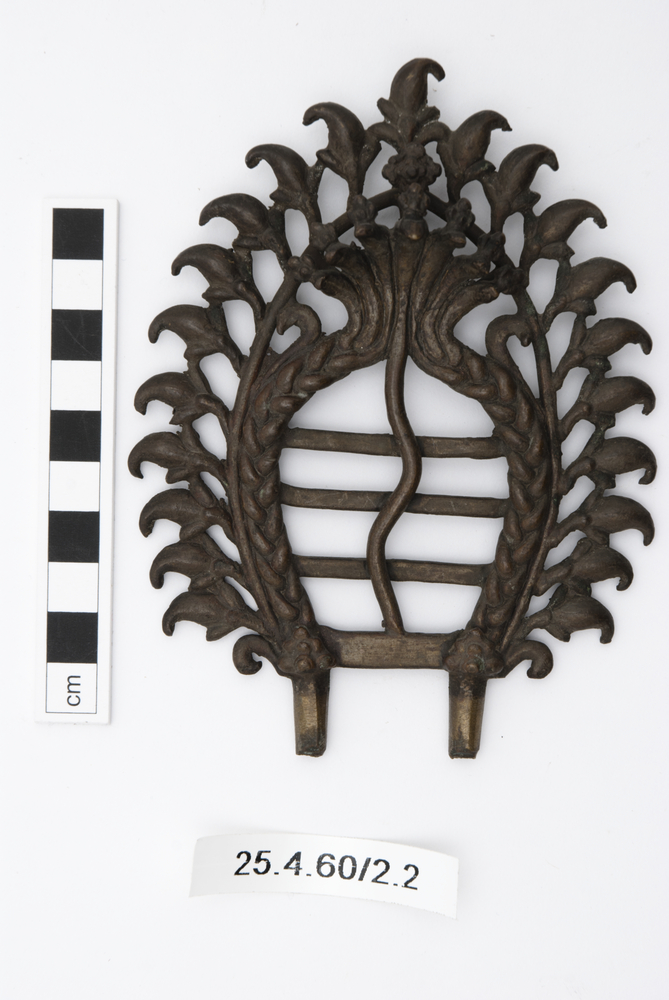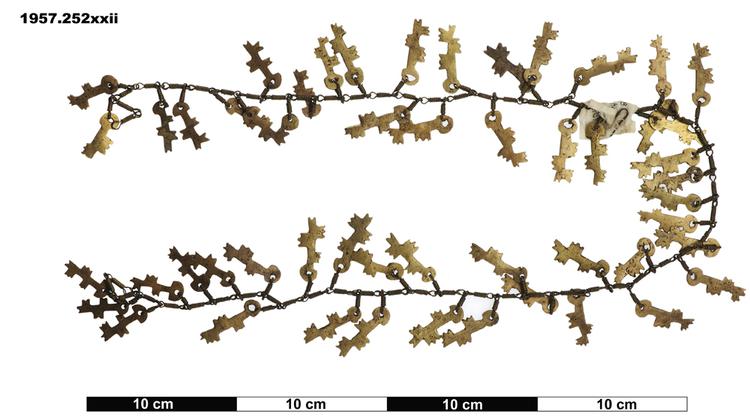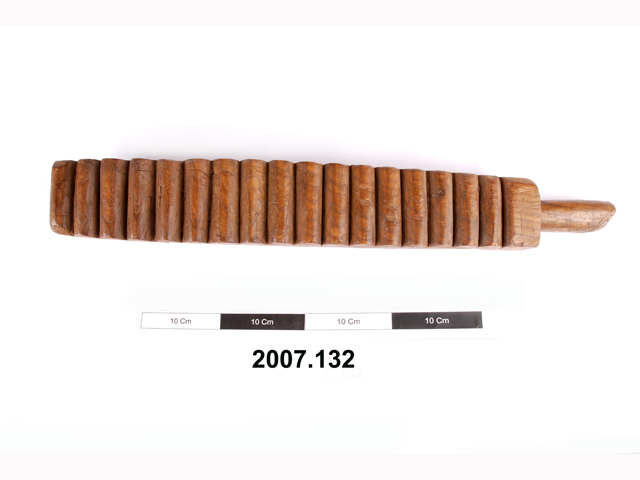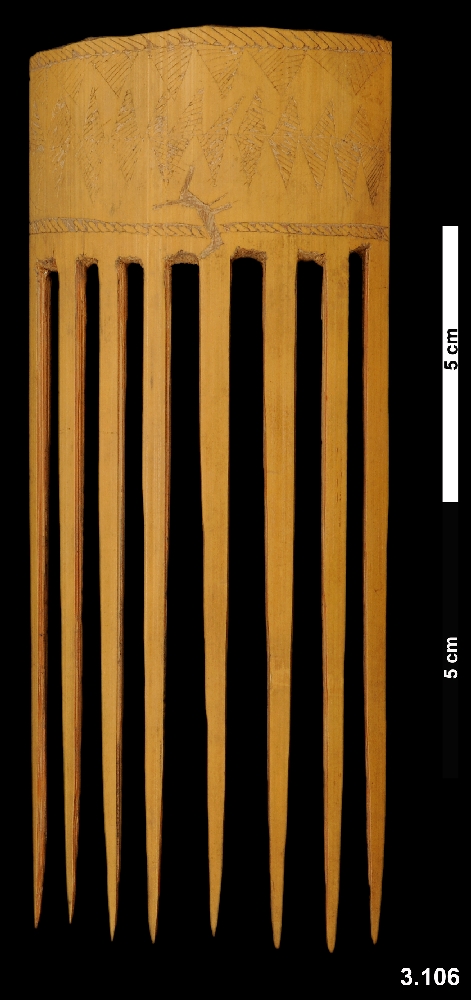
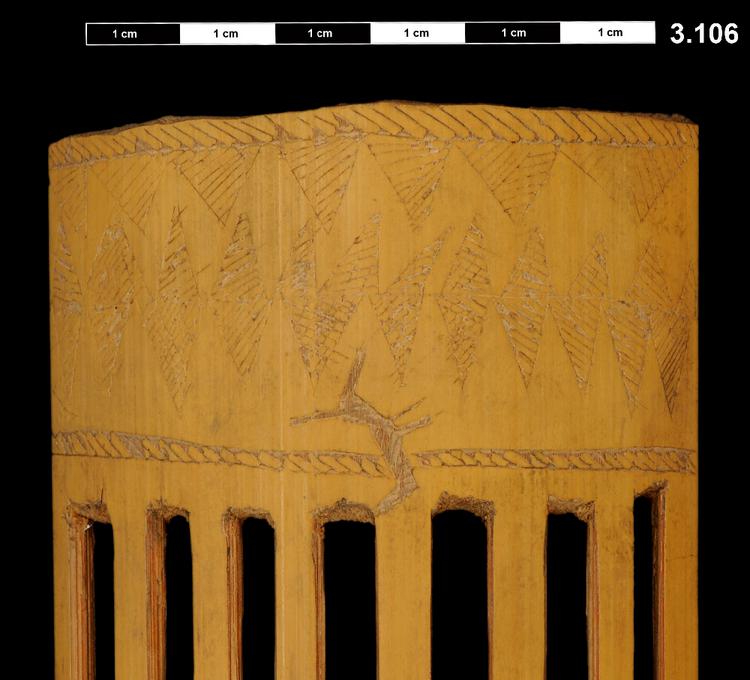
Bamboo comb, 8 tines, pyrograved with zig zag elements.
Bamboo Comb, Erromango island, Vanuatu, Eastern Melanesia. In Vanuatu, combs were traditionally worn as hair ornaments by men and boys. The comb might be set sideways into the hair at the front or back, or worn upright on the crown of the head. Some early scholars of ni-Vanuatu culture initially argued that the style of a man’s comb reflected his grade within the sukwe grade-rank system, but this interpretation is presently discounted by most. In general, it is believed that the several different styles of combs found in Vanuatu are simply different fashions that were more or less popular in each of the islands; in this multitude of comb fashions, there are similarities to both the Solomon Islands to the northwest and Western Polynesia to the east. Bamboo combs such as this example are among the most easily produced styles of comb, and have parallels with similar combs produced in New Guinea far to the west. In general, this was a style of the northern islands of Vanuatu, but it was collected on Erromango in the south of the island group, where this style is not known to have been made. Such combs were only produced on nearby Tanna in the south, and so it is likely that it was traded into Erromango from there before its foreign collector acquired it. Bamboo. Late 19th century. Collected by Mr. G.W. Robinson & sold to the Horniman Museum in 1903.



